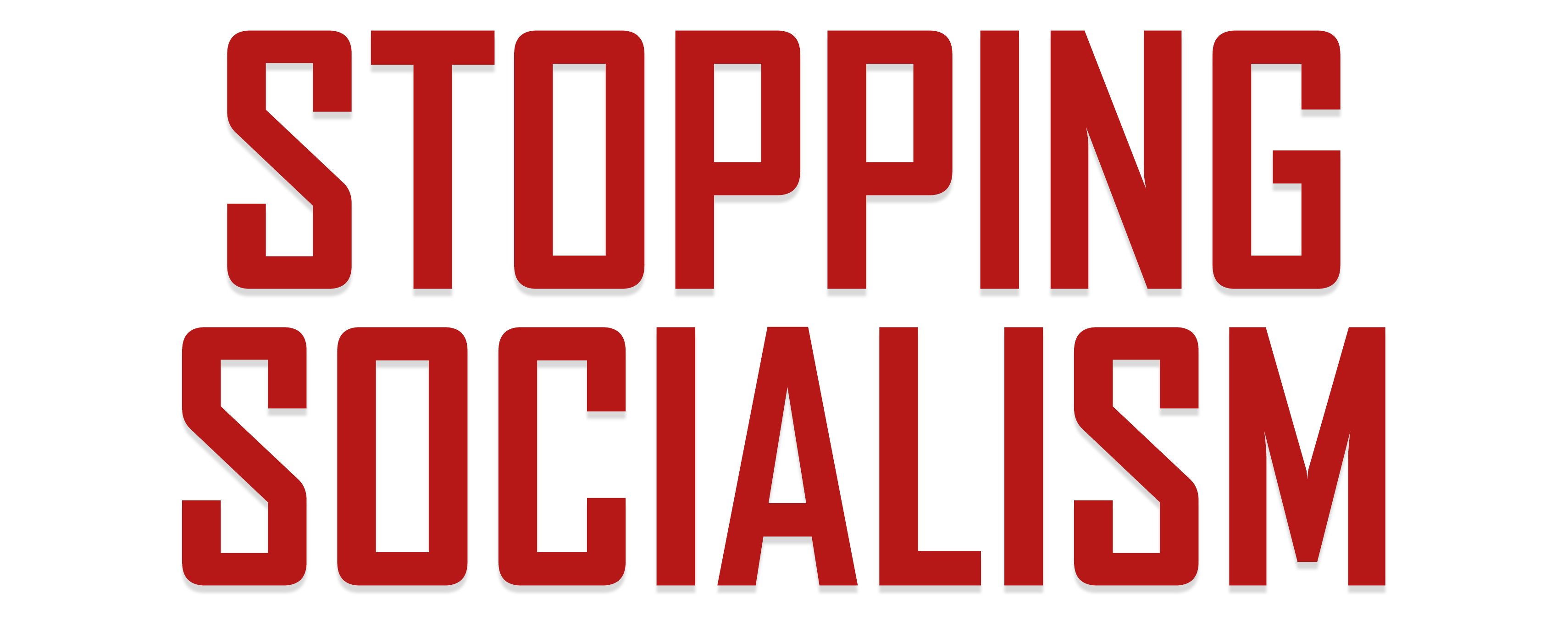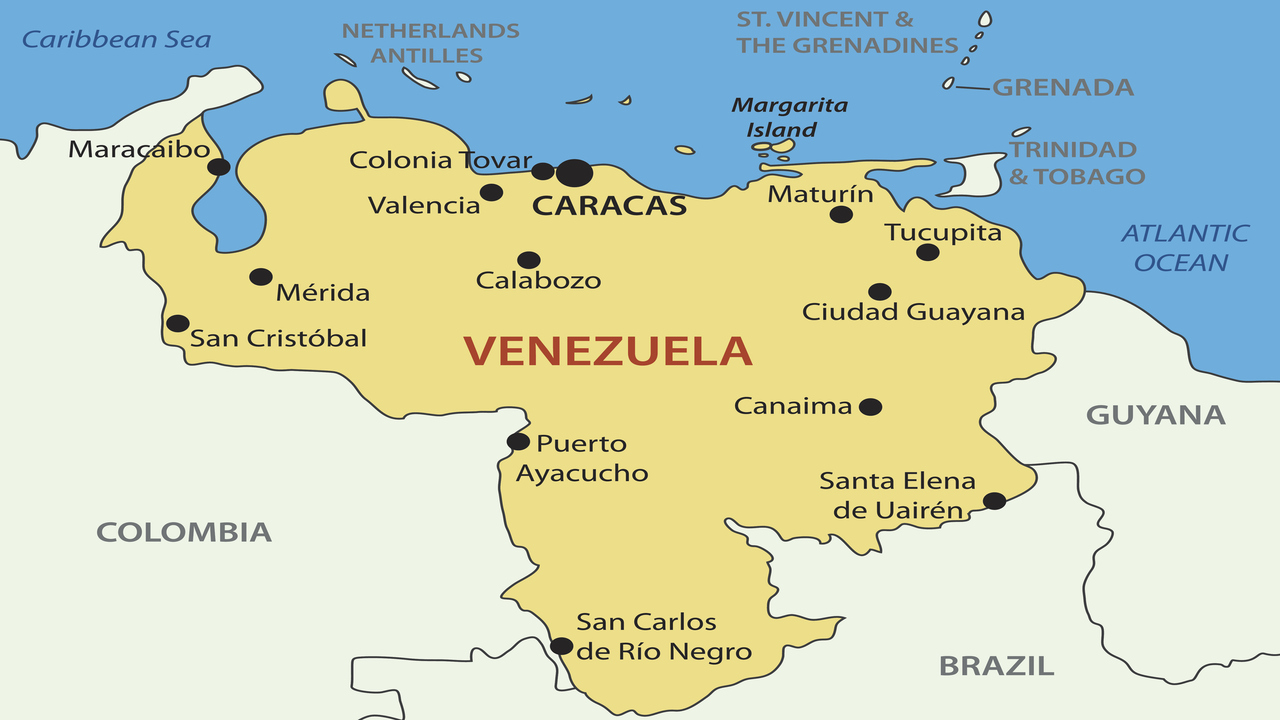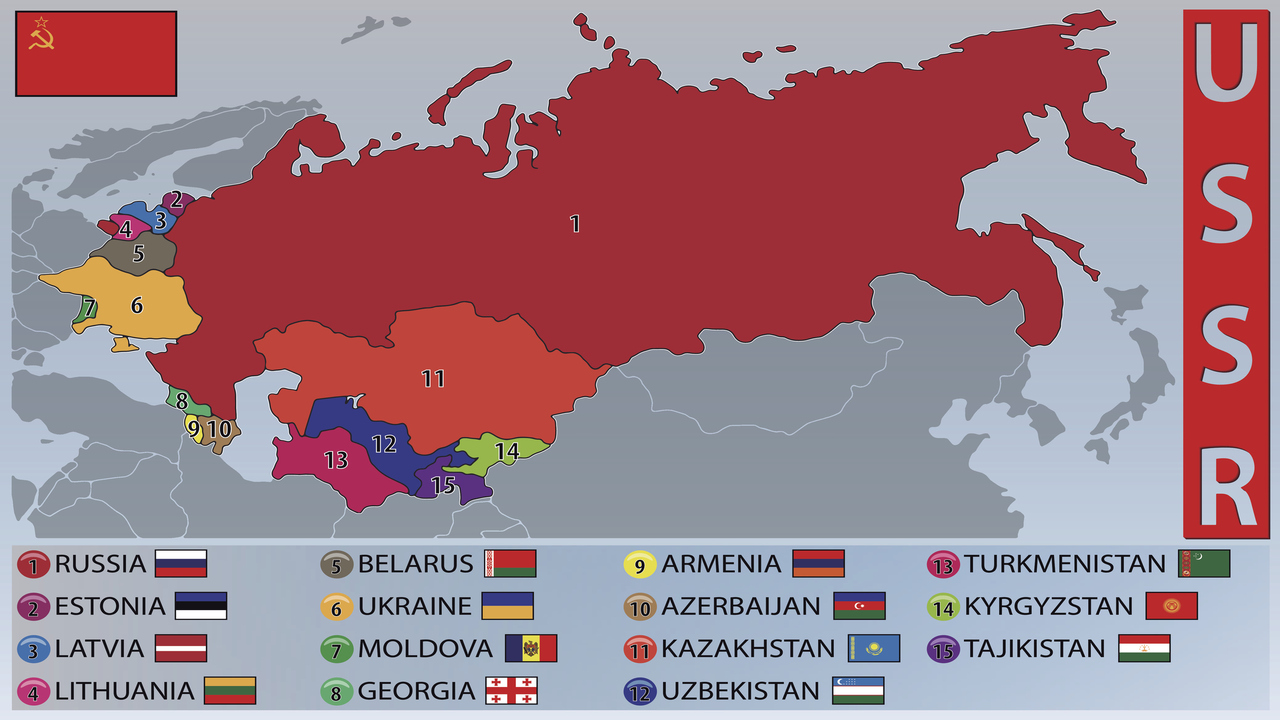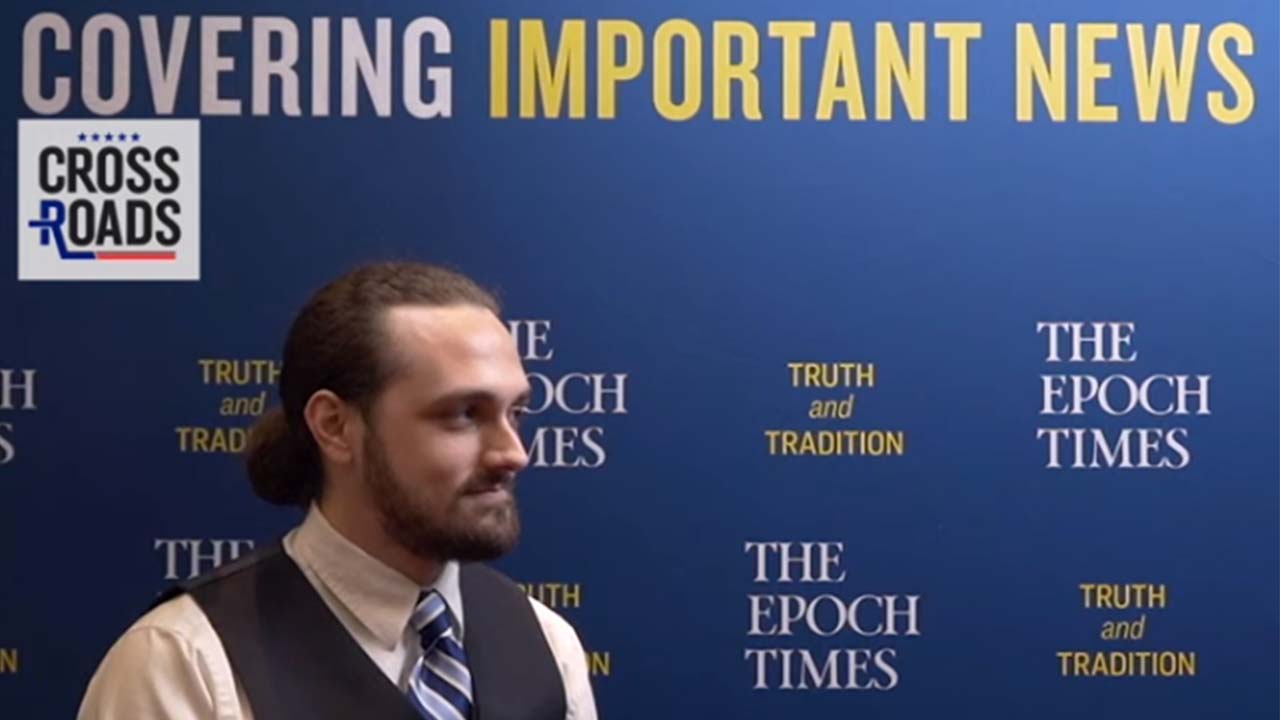Venezuela was one of the richest countries in the world during the middle of the 20th century, due in large part to its oil deposits. However, when oil prices began to plummet during the 1980s, the Venezuelan economy experienced a significant downturn. This economic crisis led to widespread popular discontent, and Hugo Chavez—a former military officer and the leader of the Revolutionary Bolivarian Movement-200—led an attempted coup against sitting President Perez in 1992. The coup failed, and Chavez was imprisoned. However, when the economic crisis showed little sign of abating, the Venezuelan people elected Chavez to be their new president six years later. In just 25 years, Hugo Chavez and his successor, Nicolas Maduro, have systematically destroyed any semblance of democratic institutions, individual rights, and economic prosperity through their socialist policies.
Political Consolidation and Repression
Upon assuming the presidency, Chavez immediately enacted a heavy-handed socialist agenda, much of which was ensconced within the 1999 Constitution. The new Constitution gave the president the power to legislate the rights of citizens and oversee all economic and financial matters, eliminate term limits, and authorize the military to ensure public order and aid national development.
Government oversight of the media and efforts to stop coverage of opposition movements have continuously escalated since Chavez took power. The Chavez and Maduro governments have issued threats to media outlets reporting on the opposition, conducted raids on television studios, closed radio stations, and imposed restrictions on certain websites. Multiple foreign journalists have faced arrest and expulsion, including the renowned Univision News anchor, Jorge Ramos, who was apprehended while conducting an interview with President Maduro. In May 2021, the office of the El Nacional newspaper was taken over by government authorities following a Supreme Court directive to pay for defamation damages. Furthermore, since the commencement of the COVID-19 state of emergency, numerous individuals expressing doubts or challenging the official policies on social media have been charged with criminal activity.
Venezuelan police forces routinely use tear gas and rubber bullets to suppress any who protest against the regime. In 2016, more than six million Venezuelans took to the streets to protest Maduro’s policies, to which Maduro responded by banning street protests. This led to more than 130 deaths and almost 5,000 arrests; in 2017, United Nations officials were barred from entering the country to investigate the source of these deaths.
In 2015, the rival party in Venezuela secured a supermajority in the nation’s legislative body, the National Assembly. However, President Maduro deprived the assembly of its constitutional rights, supplanting it with a Constituent Assembly filled with lawmakers devoted to his administration. Chavez had already fortified his control over the supposedly autonomous judiciary, but Maduro escalated this domination, transforming the Venezuelan Supreme Court into a rubber-stamp entity for enforcing his policies. He proclaimed the assembly’s nominations to the Supreme Court as unlawful, substituting it with a parallel Supreme Tribunal of Justice, filled with handpicked magistrates that he deemed sufficiently loyal.
Freedom House ranks Venezuela as “not free” in terms of political rights and civil liberties. Article 57 of Venezuela’s 1999 Constitution guarantees freedom of expression and article 51 guarantees the right to access public information. However, the 2004 Law on Social Responsibility in Radio, Television, and Electronic Media bans any content that could “incite or promote hatred,” or “disrespect authorities.” As in other authoritarian countries, in Venezuela there is no protection for either citizens or the media to speak out against the government.
Economic Deterioration and Hyperinflation
As bad as the political situation in Venezuela has become over the past 25 years, the economic situation has deteriorated at a level that is multiple orders of magnitude worse.
In his bid to seize total control over the economy, President Chavez embarked on an aggressive nationalization campaign throughout the 2000s. This forced out private businesses, deprived industries of critical technical expertise and funding, and plunged government-run entities into a downward spiral. The Chavez regime’s implementation of exchange rate and price controls disrupted the essential relationship between supply and demand, leading to economic anomalies. Chavez’s economic approach aimed to create synergy between community enterprises and the private sector. However, due to governmental overreach, most of the economy was made up of national agencies, cooperatives, and state-run industries. Beginning in 2007, the government capitalized on oil revenues to acquire the country’s largest electrical and telecommunications corporations. Additionally, the government seized control of the biggest agricultural supplies company, steel manufacturer, glass producer, and the three leading cement industries.
Chavez’s ventures yielded negligible returns, with co-operatives ending up under the control of inept and corrupt politicians. Private companies also bore the brunt of numerous governmental restrictions and elevated taxes. International carriers halted flights to Venezuela due to its unfavorable conditions. Companies like General Motors, Clorox, and Kellogg’s, fearing the confiscation of their assets by the government, chose to leave the unwelcoming economic environment. According to the 2020 Doing Business report by the World Bank, Venezuela was ranked as one of the least conducive countries for business operations, ranked 188th out of 190 countries.
Private enterprise was stifled under this system. The imposition of price controls hindered private firms from determining their own prices, making it nearly impossible to turn a profit. A climate of apprehension and corruption, coupled with bureaucratic regulations, deterred new businesses from taking shape as the security of private property was under constant threat. This situation led both foreign and local companies to cease investments in Venezuela.
In 2011, Latin America received more than $150 billion in direct foreign investment. Venezuela only accounted for $5 billion of this amount, while its neighbor, Brazil, took in a substantial $67 billion. The trend of dwindling investment only deepened over the years. By 2019, Brazil’s foreign investment grew to $72 billion, Colombia saw an influx of $14 billion, and Chile, $11 billion. In stark contrast, Venezuela’s foreign investment shrunk to less than $1 billion.
Chavez built robust alliances with other socialist or authoritarian nations like China, Russia, and Cuba, which initially helped mitigate the negative impacts of his policy decisions. He often introduced new public programs that provided either free or deeply subsidized commodities, including appliances and vehicles obtained through these partnerships, to the country’s most impoverished citizens.
Chavez allocated most government resources towards social services and welfare initiatives. These social programs, referred to as “misiones,” supplied essential services in areas such as education, health care, job programs, and nutrition. These programs were virtually unrestricted; in one instance, the government gifted nearly 200,000 houses within a single year.
Using oil revenues for social change continuously deepened the dependence on the resource. Instead of relying on entrepreneurship and free market activity to produce a variety of goods and services and diversify the economy, Chavez’s policies made citizens dependent on one commodity: oil. There was scant concern about this dependence when oil prices were soaring in the mid-2000s, but the downturn in 2014 left Venezuela bereft of funds to import goods it did not manufacture domestically. Consequently, social welfare initiatives have been reduced, one of which includes the government-distributed food aid known as CLAP boxes. A University of Venezuela researcher reported in 2018 that these boxes fulfilled roughly half of the Venezuelan population’s dietary needs. However, the weight of these boxes fell from 16 kilograms in January to 11 kilograms by May.
According to the International Monetary Fund, Venezuela’s GDP—which was nearly $400 billion in 2012—had plummeted to just $43.79 billion by 2020. Domestic production in Venezuela has taken a nosedive, while the nation’s import of food surged dramatically. As per the chief of Venezuela’s Confederation of Associations of Agricultural Producers, the country shifted from generating 70 percent of its own food to relying on imports for 70 percent of its food. While the government provides everything from seeds to fertilizers, farmers have indicated frequent shortages in these supplies. Moreover, the machinery production from the state-regulated steel industry regularly falls short of demand, and escalating inflation rates have nearly eliminated the affordability of importing new equipment.
As mentioned, when oil revenues declined, Venezuela could no longer import the goods it did not produce itself. The scarcity of goods and the lack of free market forces drove prices up, and the resulting hyperinflation has been the worst of any country in history. In 2014, Venezuela had the world’s highest inflation rate, and it only escalated from there: 69 percent in 2014, 181 percent in 2015, 800 percent in 2016, over 4,000 percent in 2017, and roughly 1,700,000 percent in 2018. As the country plunged deeper into hyperinflation, it eventually peaked at approximately 2,000,000 percent. The Central Bank of Venezuela later officially estimated an inflation rate increase to 53,798,500 percent from 2016 to April 2019.
President Maduro repeatedly increased the minimum wage to combat inflation. In August of 2018, a national minimum wage increase of 3,000 percent equated to about $20 a month. This had almost no effect; by the end of 2018, almost 90 percent of Venezuela’s population lived in poverty and prices were doubling every 19 days, on average.
Faced with such an unprecedented situation, the Maduro administration was forced to shift tactics in 2019, reducing the extent of its price controls, money printing, minimum wage hikes, and business regulations. The result was a decrease in inflation from over one million percent in mid-2018 to 2,500 percent at the close of 2021, further dropping to around 500 percent by mid-2022. The large-scale emigration of Venezuelans—which will be discussed below—has also had an unexpected positive impact on the economy, as emigrants send back money to their families in the form of dollars. By some accounts, two-thirds of all Venezuelan transactions are now conducted in foreign currencies, primarily the U.S. dollar. However, despite this reduction, inflation remains at an astronomical level. The majority of Venezuelans continue to rely on practically valueless bolivars, and the national minimum wage is less than $2 per month.
Social Agenda
With the economy collapsing, education became a luxury. Schools primarily served as venues for students to receive government-provided meals, despite the buildings being without water and electricity. Every year, thousands of teachers do not return to their classrooms, instead choosing to work jobs that offer slightly better pay or leaving the country altogether. Higher education has not been spared either. Simon Bolivar University, known as Venezuela’s “University of the Future,” had been operating on government funds since its inception in 1970. Now, however, it relies on financial contributions from alumni living overseas, who are also offering remote classes through Skype. With a monthly salary equivalent to a mere $25, professors are incentivized to seek greener pastures abroad, leading to a significant staff exodus. More than 430 faculty and staff members departed the university between the years 2015 and 2017.
The education sector isn’t the only one facing a brain drain; more than 20,000 physicians have escaped from Venezuela’s harsh conditions since 2014. Attacks on medical personnel by patients’ families are common occurrences, aggravated by the lack of supplies and constant infrastructure failures. Nationwide, hospitals are struggling with the scarcity of essential drugs to manage conditions like hypertension and diabetes, and expensive medications for diseases such as cancer, Parkinson’s, and multiple sclerosis are no longer imported because the government has no money. Procedures such as organ donations and transplants came to a halt in 2017.
Governmental cuts in funding, the silencing of medical practitioners, and censorship of research publications have further exacerbated the situation. When the health minister, Antonieta Caporale, briefly resumed updates in 2017, she was promptly dismissed. The data indicated a 65 percent increase in maternal mortality and a 30 percent rise in infant mortality between 2016 and 2017. Diseases like tuberculosis, diphtheria, measles, and malaria are causing mass crises, with widespread malnutrition compounding the issue. Based on World Health Organization standards, the malnutrition rate among Venezuelan children under the age of five-years-old has reached a “crisis level.” A university study discovered that nearly two-thirds of Venezuelans surveyed lost approximately 25 pounds on average in 2017.
Mass Population Exodus
As a result of the economic devastation and political repression, Venezuela has become the epicenter of one of the most significant mass migrations witnessed in Latin American history. By early 2022, nearly six million individuals have been forced to leave due to scarcity of basic necessities such as food, water, and health care. Former professionals like doctors and engineers now hold jobs as waiters or retail workers in countries like Colombia and Peru, sending earnings back home to their families still in Venezuela. However, they often encounter animosity from locals who accuse Venezuelan migrants of stealing their jobs.
Colombia, Venezuela’s neighbor to the west, is absorbing most of those fleeing. Though Colombia closed the border with Venezuela to try to stem the spread of COVID-19, Colombia’s President Iván Duque announced in February 2021 that the government would “provide temporary legal status to the more than 1.7 million Venezuelan migrants who have fled to Colombia in recent years.” Hundreds of thousands more travel through Colombia on their way to other countries including Peru, Chile, and Ecuador. The tragedy afflicting once prosperous Venezuela shows little sign of stopping, and likely will not improve until the people overthrow their socialist oppressors.
Jack McPherrin ([email protected]) is a managing editor of StoppingSocialism.com, research editor for The Heartland Institute, and a research fellow for Heartland's Socialism Research Center. He holds an MA in International Affairs from Loyola University-Chicago, and a dual BA in Economics and History from Boston College.






